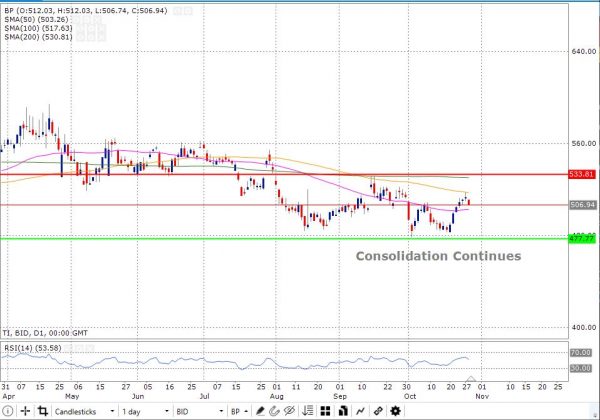BP reported its earnings today and the numbers came in strong despite some strong winds. The adjusted net income exceeded expectations, came in at $2.25 billion. The company reported downstream net income (before tax and interest) of $1.88 billion—the best number as compared to the other quarters of 2019. The oil and gas production was up—year-on-year, but down on quarter-on-quarter. It pumped 3.7 million barrels a day during the current quarter and the reading for the previous was 3.8 million barrels a day.
Debt Needs More Cosmetic Work
The company still has issues with its debt and we have not seen any major progress. There was no change in leverage position—the adjusted net debt is at $46.5 billion. Gearing has increased to 31.7% from the previous reading of 31%
Trading and Refining Provided Cushion
The topline figures were strong because of the refining and trading revenues were strong. Remember, BP’s in house trading arm has become an important part of its business. The refinery business did well—despite tighter margins—due to strict cost structures.
Soaring Capex
Talking about expenses, BP’s capex actually increased during the quarter, it has spent $11.3 billion so far this year which is higher than the current guidance $13 billion to $14 billion. This means, in the final quarter, the company needs to cut its capex spending if it wants to honor its guidance especially that the oil price is unlikely to top the $65 level which can justify the kind of capex spending which the company is making.
Share Buyback Commitment Is Strong
Something which didn’t surprise us much from the BP earnings was that the company didn’t increase the dividend and this is understandable because it needs to bring gearing under control.
To conclude, we think that the overall numbers are respectable. We like the company’s commitment to share buyback and it hasn’t increased the dividend just to please the investors. But, the capex spending and net debt situation still needs more cosmetic work
Another important factor which investors need to keep an eye on is the company’s share purchase buyback program. During the first 9 months of this year, it has purchased nearly 52 million ordinary shares which have cost them 340 million and the company still has 1.5 billion to purchase more shares in order to offset scrip dilution which took place during 2017. Share purchase buyback makes the company position stronger.
Price Action
The high level of debt is likely to drive the price lower. Overall, we expect the price trend to continue to consolidate unless oil prices improve. The near term support could be near the 50-day moving average which is at 503.















